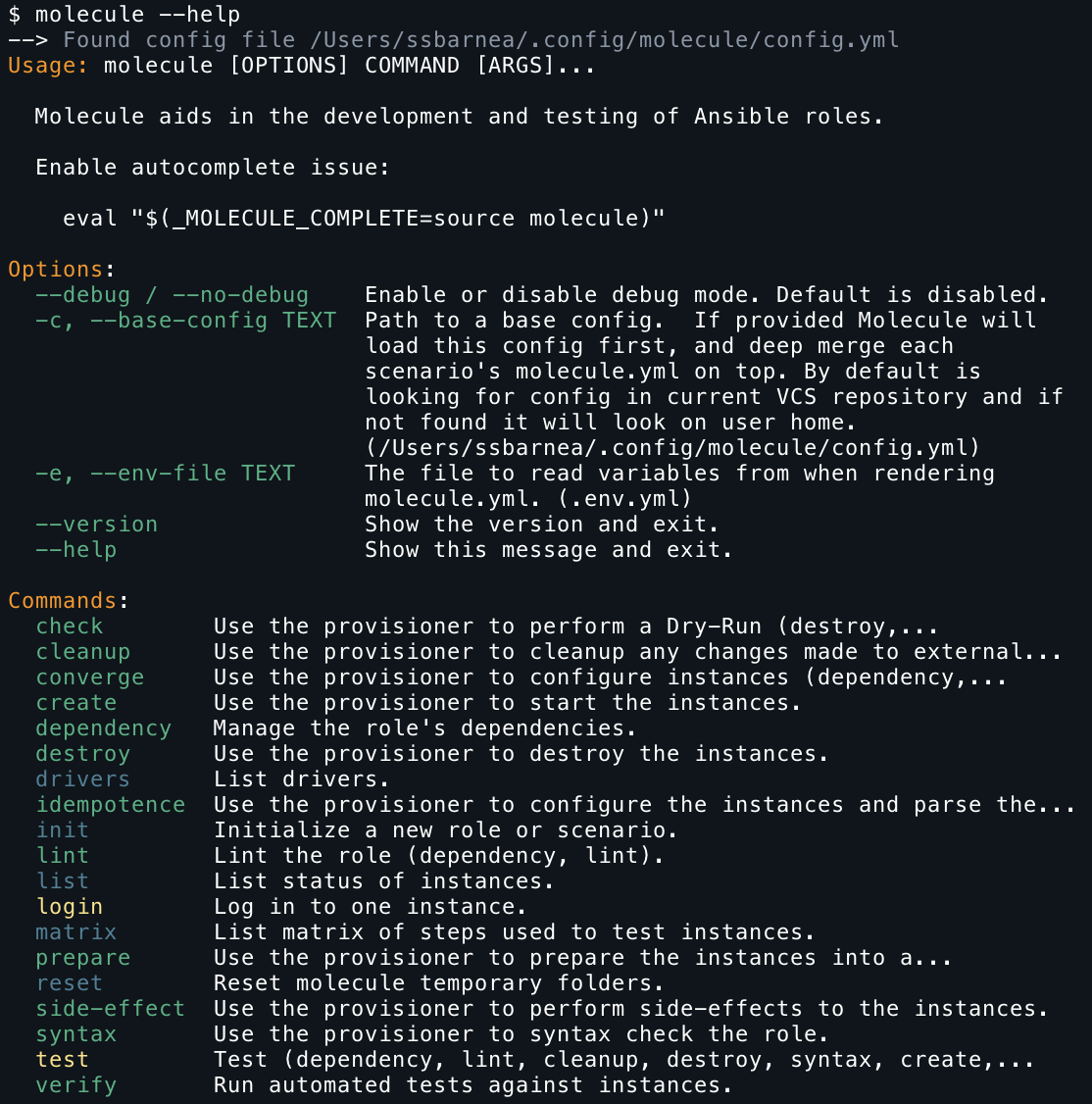Molecule notes
not a tutorial, more of a tricks session
Based on molecule v3.0.2
Why to test?
- code needs to be maintained
- avoid production outages
- assert change risks
Manual testing does not pay well!
Terminology
- driver (provider) - inventory management backend
- scenario - basically a functional test
- command
- usually a playbook and optional
- can be embedded
- sequence - a list of commands
- verifier - tools use to validate success run
What can Molecule test
- roles
- playbooks
- anything you can run
Molecule provisions virtualized test hosts, run commands on them and assert the success.
What Molecule cannot do
- run multiple scenarios at once
- pytest-molecule does it
- produce HTML reports of runs
- pytest-html does it
☕️
Installing
pip3 install 'molecule[docker]' molecule-azure
# most drivers are now plugins and with their own packages
# docker driver is part of core
Getting more information
$ molecule --version
molecule 3.0.3.dev41+gbe117525
ansible==2.9.6 python==3.7
$ molecule drivers
name
---------
azure # <-- this is here because we installed molecule-azure
delegated
docker
podman
Command line help

Molecule driver (provider)
Which driver to use
- Containers (docker/podman) unless you need systemd
- Delegated tests already existing inventory
- If you need real VMs use either:
- Any cloud provider
- Vagrant which can run locally and make use of virtualbox or libvirt
Molecule verifiers
Tools used to assert success of your test
Molecule commands and sequences
- command ~= a playbook (often embeded)
- a sequence is a list of commands to be run, :
- create
- check
- converge
- destroy
- test - most complete one!
Molecule test sequence
Default test sequence includes:
$ molecule matrix test
--> Test matrix
└── default # <-- this is the name of the scenario
├── dependency
├── lint
├── cleanup
├── destroy
├── syntax
├── create
├── prepare # bring host to testable status
├── converge # <-- only one required
├── idempotence
├── side_effect
├── verify # asserts best location
├── cleanup
└── destroy
Each scenario has a persistent state

createanddestroyaffect thecreatedstateconvergeandcleanupaffect theconvergedstate- disable auto-destroy by adding
--destroy=never
A minimalist scenario layout
$ tree # from inside a role directory
├── README.md
├── defaults
│ └── main.yml
├── files
├── handlers
│ └── main.yml
├── meta
│ └── main.yml
├── molecule
│ └── default # scenario name
│ ├── converge.yml # should contain at least "include_role: foo"
│ ├── molecule.yml # <-- required
│ └── verify.yml
├── tasks
│ └── main.yml
└── vars
└── main.yml
Using config file to avoid repetition
- config file defines only default values for
molecule.ymlfiles - config file can be stored at repository level or user:
~/.config/molecule/config.yml- user level{REPO}/.config/molecule/config.yml- repo level (recommended)
- any key defined in
molecule.ymlwill override values fromconfig.yml
Practical config example:
# .config/molecule/config.ym
driver:
name: delegated # <-- now default driver will be delegated
lint: ansible-lint -v
# molecule.yml
driver:
name: docker
# what is effectively loaded
driver:
name: docker
lint: ansible-lint -v
Hint: Use config.yml to follow DRY principle
🤗
That’s it! Any Questions?
- #ansible-molecule channel on irc
- Docs
- Pull Requests welcome
- Check exiting tickets